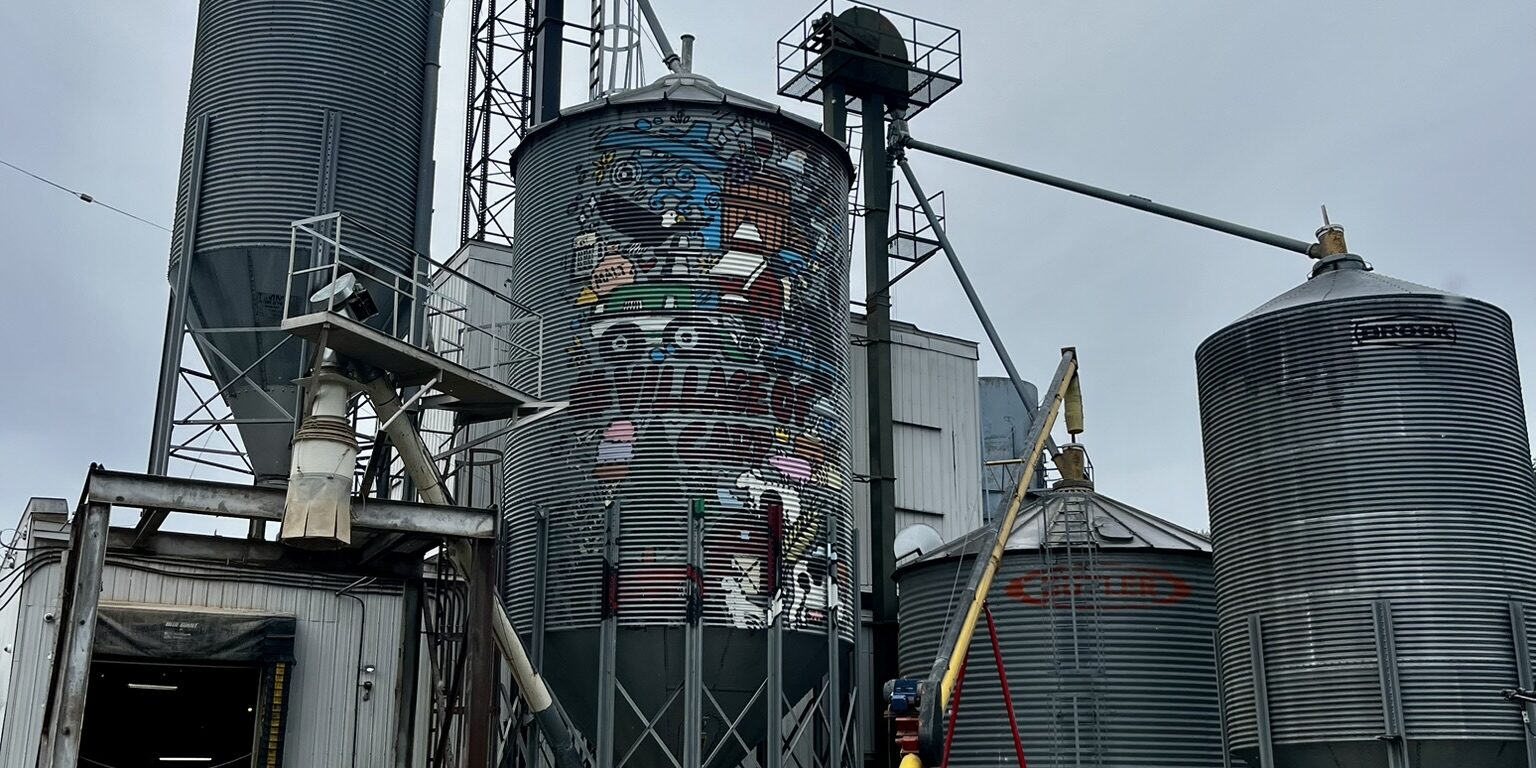Diversifying Ontario grains from field to fork
From native switchgrass to table-ready barley, Ontario farmers and processors are proving that crop diversification strengthens not only soils and biodiversity, but also the resilience of entire value chains.
They were also both stops on the 2025 Road Trip (organized by FoodBridge partner the Ontario Soil Network) which opened the doors to barns, fields, and mills for a group of curious visitors, including FoodBridge team members Stacie Irwin and Beth Hunter.
Switching to switchgrass

Initially driven by rocky, thin soil and crop loss due to local wildlife, Ron Toonders has been growing switchgrass, a native perennial grass, on his farm in Williamsburg, Ontario for the past several years. Of 1200 acres, 250 are in switchgrass, with the rest in corn and soy. He grows switchgrass for five years before rotating to another crop, harvesting the seed for sale and the straw for bedding on dairy farms.
Switchgrass is a crop that needs minimal inputs – no potassium or phosphorus, and only 50 pounds of nitrogen. Grown on less-productive areas of the farm, its complex root system helps build soil health, while also spreading out planting and harvest times in the year.
“Over the past 20 years, soil erosion has cut back to the point that even after strong rains, the water running off fields is clear, instead of taking soil along with it, like it used to”, Ron says.
While there is currently a market for switchgrass seed, mainly thanks to the Resilient Agricultural Landscapes Program (RALP) that funds farmers to plant natural prairies, the challenge is marketing the switchgrass straw. Despite clear benefits, including that it is less slippery and more absorbent than wheat straw, dairy farms prefer to stick to the familiar value that wheat represents. Ron is determined to get over this hurdle:
“I’ll kill the wheat straw market one day!”, he laughs.
Barley beyond the feed market

Kevin Stewart is the co-owner and operator of Ottawa Valley Grain Products, where grain – primarily barley – is dehulled and polished for human consumption. Three to four truckloads of barley are shipped each week from the facility in Carp, Ontario, with residues going to the feed market. The company has been operating since 1929.
“We started milling grains into flour in a serious way five years ago to help the local area when store shelves were empty during the pandemic […] and flour now makes up 20% of the business”, explains Kevin.
Including barley or other small grains (wheat, rye, oats) in rotations is a valuable practice for sustainable cropping systems, breaking pest cycles and requiring relatively few inputs to produce. Harvested in the late summer, it allows cover crops to be planted before winter sets in. In the case of winter barley, it is planted in the fall and keeps soils covered in the winter.
While the bulk of Ottawa Valley Grain Products are sold to co-packers for private labelling in Toronto and Montreal, it also exports to Central and South America. Prices are currently higher than both corn and feed barley prices, and contracts with growers spread deliveries throughout the year, with premium pricing that accounts for on-farm storage costs. While the bulk of Ottawa Valley Grain’s sourcing is from conventional agriculture, they also process organically grown grain, although the mill is not currently organic certified.
“We source grain from farms in and around the Ottawa Valley, and often, directly from the farmers themselves” ; “We know where our grain comes from, how it is delivered to our mill, and then processed”, says Kevin.
Growth plans and pains: the business case for diversification
Kevin sees significant market opportunity for barley and would like to see more producers growing it in the region. The company had major plans for expansion, with a $3 million federal loan in place for a $12 million plant in Almonte (Mississippi Mills), but the project has been put on hold in the face of volatile cross-border trade with the US.
“The uncertainties around global trade have made it clear that governments need to start treating food the way they treat energy, infrastructure, or defence—like national security”, says Kevin.
Despite their environmental and agronomic benefits, both switchgrass and barley are minor in the sea of corn, soy, and oats grown on Ontario fields. Challenges to growth include moving beyond traditional practices (using wheat for bedding straw) and well established (corn, soy, and wheat) markets.
At FoodBridge, we know that for farmers to grow more diverse crops, there must be a viable financial case for companies all along the supply chain, from farm to fork. Our crop diversification work in eastern Canada includes supporting farmer cohorts on the technical challenges of growing small grains, field testing varieties that meet needs in fields and factories, and testing agreements and contracts that work for both growers and buyers.






